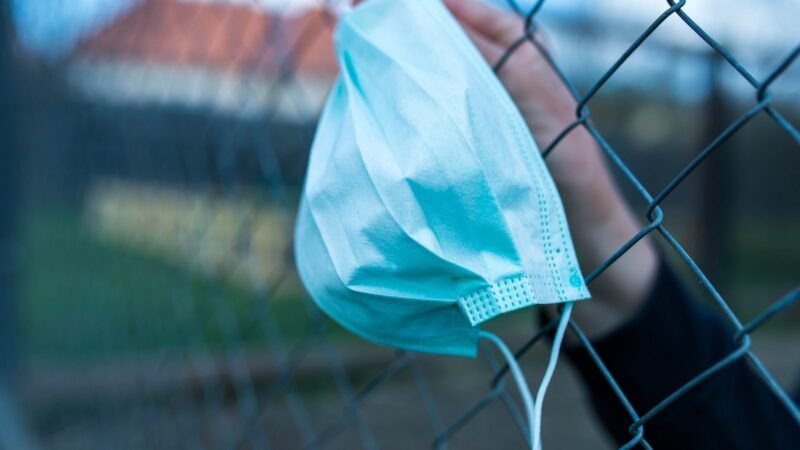Study: Prison COVID-19 Spread Led to Hundreds of Thousands of Community Infections
Thanks to poor management and massive rates of incarceration, people are dying both inside and outside prisons.

The poor management of COVID-19 risks in jails and prisons across the country has contributed significantly to the dramatic spread of the pandemic outside prison walls, producing as many as 500,000 cases in three months.
So says a newly released report by the Prison Policy Initiative, authored by Gregory Hooks, a sociology McMaster University, and Wendy Sawyer, research director for the initiative.
To be clear, those 500,000 cases aren't the prisoners. According to the Marshall Project, there have been more than 275,000 infections of prisoners across the country. That's about 20 percent of the prison population.
What the Prison Policy Initative's report attempts to show is the extent that these jail and prison outbreaks escape those facilities and infect surrounding communities. The report looks at the difference in infection rates in non-metro counties with high ratios of incarcerated populations (meaning, they have large jails or prisons there) to others. The study finds that the counties with the highest ratio of incarcerated citizens consistently saw the largest number of new infections per 100,000 people.
Marion County, Ohio, for example, has two state prisons and a jail that serves multiple counties. The Marion Correctional Institution saw a huge outbreak of infections in late April, with more than 2,000 inmates testing positive. At the time, that accounted for the vast majority of COVID-19 infections in the county.
The infections, of course, did not stop with the prisoners. More than 150 corrections staff were diagnosed positive by late April, and one staff member died from COVID-19. Hooks calculates that an additional 310 cases from May to August could be attributed to the spread from the prison. That may seem like a small number, but it accounts for 37 percent of all new infections in Marion County (population: 65,000) during that time.
The numbers don't stop there either. The paper goes on to calculate how high incarceration rates within a county affect nearby counties that are part of the same economic area. Nearby Ohio counties with major economic ties to Marion County also saw higher rates of infection that could be traced to incarceration rates.
The study shows an extremely strong correlation between incarceration rates and the spread of COVID-19. And yet, as the Associated Press notes, we're still seeing situations where prisoners aren't properly tested or treated for COVID-19.
And now, predictably, there's the question of where prisoners fall on state plans for vaccinations, if they're even included on priority lists at all. In Massachusetts, inmates will be given the highest of priorities. Other states rank them lower, but are still giving them preference.
But Democratic Colorado Gov. Jared Polis has talked about the vaccine priority list as though being selected is some sort of reward. "There's no way it's going to go to prisoners…before it goes to the people who haven't committed any crime," he told reporters.
That's a myopic, politically driven approach to the issue. Prisoners should be prioritized not on the basis of whether some people are more "deserving," but because some people are more vulnerable or at heightened risk of exposure. That includes many inmates, particularly the older ones. And the benefits will extend far beyond prison walls.
This post has been updated to correct the name of the Prison Policy Initiative.


Show Comments (36)